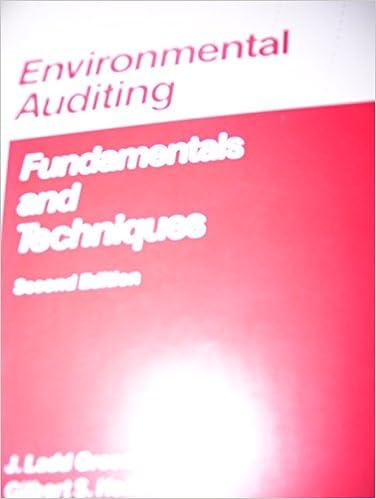5. Merger analysis - Free cash flow to equity (FCFE) approach . Consider the following acquisition data regarding Scorecard Corp. and Orators Telecom Inc. : Scorecard Corp. is considering an acquisition of Orators Telecom Inc. Scorecard Corp. estimates that acquiring Orators will result in incremental value for the firm. The analysts involved in the deal have collected the following information from the projected financial statements of the target company. Year 3 Data Collected (in millions of dollars) Year 1 Year 2 EBIT 6.0 7.2 Interest expense 4.0 Debt 30.8 36.4 Total net operating capital 107.1 109.2 9.0 4.8 39.2 111.3 Orators is a publicly traded company, and its market-determined pre-merger beta is 1.20. You also have the following information about the company and the projected statements Orators currently has a $16.00 million market value of equity and $10.40 million in debt. The risk-free rate is 0% with a 8.10% market risk premium, and the Capital Asset Pricing Model produces a pre-merger required rate of return on equitys of 15.72% Orators's cost of debt is 8.00% at a tax rate of 30%. The projections assume that the company will have a post-horizon growth rate of 5.50% . Current total net operating capital is $104.0, and the sum of existing debt and debt required to maintain a constant capital structure at the time of acquisition is $28 million The firm has no nonoperating assets, such as marketable securities. With the given information, use the free cash flow to equity (FCFE) approach to calculate the following values involved in the merger analysis: Value FCFE horizon Value Value of FCFE $41.22 million $37.58 million $61.82 million The estimated value of Orators's operations after the merger is than the ma$53.43 million 's equity. This means that the wealth of Orators's shareholders will If it merges with Scorecard rather than remaining as a stand-alone corporation. True or False: Like the corporate valuation model, the FCFE model can be applied only when the capital structure is constant, O False O True AD A. 5. Merger analysis - Free cash flow to equity (FCFE) approach Consider the following acquisition data regarding Scorecard Corp. and Orators Telecom Inc.: Scorecard Corp. is considering an acquisition of Orators Telecom Inc. Scorecard Corp. estimates that acquiring Orators will result in incremental value for the firm. The analysts involved in the deal have collected the following information from the projected financial statements of the target company. Data Collected (in millions of dollars) Year 1 Year 2 EBIT 6.0 7.2 Interest expense 4.0 4.4 Debt 30.8 36.4 Total net operating capital 107.1 109.2 Year 3 9.0 4.8 39.2 111.3 Orators is a publicly traded company, and its market-determined pre-merger beta is 1.20. You also have the following information about the company and the projected statements. Orators currently has a $16.00 million market value of equity and $10.40 million in debt. The risk-free rate is 6% with a 8.10% market risk premium, and the Capital Asset Pricing Model produces a pre-merger required rate of return on equity is of 15.72%. Orators's cost of debt is 8.00% at a tax rate of 30%. . The projections assume that the company will have a post-horizon growth rate of 5.50%. Current total net operating capital is $104.0, and the sum of existing debt and debt required to maintain a constant capital structure at the time of acquisition is $28 million The firm has no nonoperating assets, such as marketable securities. With the given information, use the free cash flow to equity (FCFE) approach to calculate the following values involved in the merger analysis: Value FCFE horizon value Value of FCFE $31.63 million $38.55 million $49.23 million $26.27 million The estimated value of Orators's operations after the merger is than the ma Orators's shareholders will if it merges with Scorecard rather than rema 's equity. This means that the wealth of corporation True or False: Like the corporate valuation model, the FCFE model can be applied only when the capital structure is constant. O False True 5. Merger analysis - Free cash flow to equity (FCFE) approach As Aa Consider the following acquisition data regarding Scorecard Corp. and Orators Telecom Inc. : Scorecard Corp. is considering an acquisition of Orators Telecom Inc. Scorecard Corp. estimates that acquiring Orators will result in incremental value for the firm. The analysts involved in the deal have collected the following information from the projected financial statements of the target company. Year 3 Data Collected (in millions of dollars) Year 1 Year 2 EBIT 6.0 7.2 Interest expense 4.0 4.4 Debt 30.8 36.4 Total net operating capital 107.1 109.2 9.0 4.8 39.2 111.3 Orators is a publicly traded company, and its market-determined pre-merger beta is 1.20. You also have the following information about the company and the projected statements Orators currently has a $16.00 million market value of equity and $10.40 million in debt. The risk-free rate is 6% with a 8.10% market risk premium, and the Capital Asset Pricing Model produces a pre-merger required rate of return on equity rs of 15.72%. . Orators's cost of debt is 8.00% at a tax rate of 30%. The projections assume that the company will have a post-horizon growth rate of 5.50%. . Current total net operating capital is $104.0, and the sum of existing debt and debt required to maintain a constant capital structure at the time of acquisition is $28 million. The firm has no nonoperating assets, such as marketable securities. with the given information, use the free cash flow to equity (FCFE) approach to calculate the following values involved in the merger analysis: Value FCFE horizon value Value of FCFE The estimated value of Orators's operations after the merger is than the market value of Orators's equity. This means that the wealth of Orators's shareholders will if it merges with Scorecard rather than remaining as a stand-alone corporation. True or False: Like the corporate valuation model, the FCFE model can be applied only when the capital structure is constant. False O True









